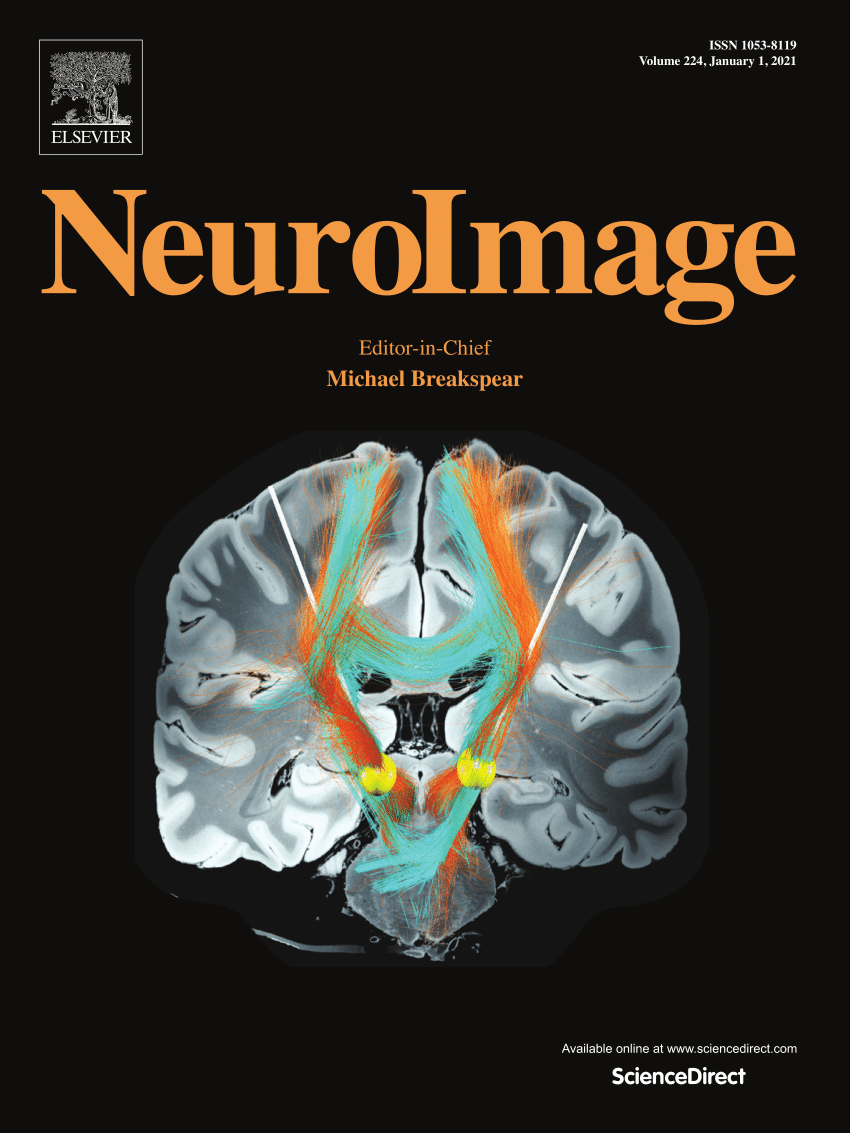Development of white matter in young adulthood: The speed of brain aging and its relationship with changes in fractional anisotropy
IF 4.7
2区 医学
Q1 NEUROIMAGING
引用次数: 0
Abstract
White matter (WM) development has been studied extensively, but most studies used cross-sectional data, and to the best of our knowledge, none of them considered the possible effects of biological (vs. chronological) age. Therefore, we conducted a longitudinal multimodal study of WM development and studied changes in fractional anisotropy (FA) in the different WM tracts and their relationship with cortical thickness-based measures of brain aging in young adulthood. A total of 105 participants from the European Longitudinal Study of Pregnancy and Childhood (ELSPAC) prenatal birth cohort underwent magnetic resonance imaging (MRI) at the age of 23-24, and the age of 28-30 years. At both time points, FA in the different WM tracts was extracted using the JHU atlas, and brain age gap estimate (BrainAGE) was calculated using the Neuroanatomical Age Prediction using R (NAPR) model based on cortical thickness maps. Changes in FA and the speed of cortical brain aging were calculated as the difference between the respective variables in the late vs. early 20s. We demonstrated tract-specific increases as well as decreases in FA, which indicate that the WM microstructure continues to develop in the third decade of life. Moreover, the significant interaction between the speed of cortical brain aging, tract, and sex on mean FA revealed that a greater speed of cortical brain aging in young adulthood predicted greater decreases in FA in the bilateral cingulum and left superior longitudinal fasciculus in young adult men. Overall, these changes in FA in the WM tracts in young adulthood point out the protracted development of WM microstructure, particularly in men.
青年期白质的发育:大脑老化的速度及其与分数各向异性变化的关系。
人们对白质(WM)的发育进行了广泛的研究,但大多数研究使用的都是横断面数据,而且据我们所知,没有一项研究考虑了生物年龄(相对于计时年龄)可能产生的影响。因此,我们对WM的发育进行了一项纵向多模态研究,并研究了不同WM束中分数各向异性(FA)的变化及其与基于皮层厚度的青年期大脑老化测量的关系。来自欧洲妊娠与儿童期纵向研究(ELSPAC)产前出生队列的 105 名参与者分别在 23-24 岁和 28-30 岁时接受了磁共振成像(MRI)检查。在这两个时间点,使用 JHU 地图集提取了不同 WM 道的 FA 值,并使用基于皮层厚度图的神经解剖年龄预测 R(NAPR)模型计算了脑年龄差距估计值(BrainAGE)。FA的变化和大脑皮层老化的速度被计算为20多岁晚期与20多岁早期各自变量之间的差异。我们证明了FA的特异性增加和减少,这表明WM的微观结构在生命的第三个十年仍在继续发展。此外,大脑皮质老化速度、脑束和性别对平均 FA 的显着交互作用显示,年轻成年时大脑皮质老化速度越快,预示着年轻成年男性双侧脑室和左上纵束的 FA 下降幅度越大。总之,年轻成年时 WM 束 FA 的这些变化表明,WM 微观结构的发展是漫长的,尤其是在男性中。
本文章由计算机程序翻译,如有差异,请以英文原文为准。
求助全文
约1分钟内获得全文
求助全文
来源期刊

NeuroImage
医学-核医学
CiteScore
11.30
自引率
10.50%
发文量
809
审稿时长
63 days
期刊介绍:
NeuroImage, a Journal of Brain Function provides a vehicle for communicating important advances in acquiring, analyzing, and modelling neuroimaging data and in applying these techniques to the study of structure-function and brain-behavior relationships. Though the emphasis is on the macroscopic level of human brain organization, meso-and microscopic neuroimaging across all species will be considered if informative for understanding the aforementioned relationships.
 求助内容:
求助内容: 应助结果提醒方式:
应助结果提醒方式:


